The fire burned low under a moonless night sky at Harriman State Park, and, for the chief justice of American fly fishing, court was in session.
The gathering was privileged. Attendees had traveled from all over the country and set aside a week of time to, amongst other things, hear Justice Tom Rosenbauer address the audience of acolytes and apprentices — this was the collective Class of 2022 of the School of Trout.
An hour earlier, as the class returned from its first day fishing the nearby Henry’s Fork to enjoy a dinner in the park’s spacious dining hall situated perfectly in the lodgepoles atop the Island Park Plateau, the power at the state park went out. The school’s lead instructor, former guide and well-known conservationist Todd Tanner, had planned a “classroom” presentation for the evening, with Rosenbauer presiding. Electricity would have been involved. Certainly a projector for PowerPoint delivery. Maybe even a laser pointer.
But now, with everything dark, Tanner had to punt. So, under the light of a cell-phone flashlight, he gathered several armloads of firewood, circled some benches around a spacious fire pit in the courtyard of the park’s educational compound, and lit a match.
And, as Rosenbauer, 68, who’s worked at one company since he was 22 years old – Orvis – began to speak, not a soul around the fire would dare admit that he or she’d rather be sitting in a classroom watching a projector screen.
This was way better.
Rosenbauer is one of those genuine personalities. Kind and caring, thoughtful and funny, he’s just a damned good guy. That he’s also in possession of a head full of 50-plus years of fly fishing experience and willing to share it … well that’s one of the reasons 10 anglers from across America traveled to attend Tanner’s annual School of Trout.
And, no, it’s not just about Rosenbauer. Tanner assembled what amounts to fly fishing’s version of a baseball fantasy camp. Sure, Rosenbauer might be the equivalent of Ted Williams, but when you throw in folks like renowned fly casting instructor John Juracek, author and editor Kirk Deeter, photographer Tim Romano, artist Bob White and guides like Brant Oswald or Hillary Hutcheson, it’s easy to understand the overall appeal of the school, where it’s not just about the mechanics of fly fishing, but more about the craft in general and how to get the most out of it. Attendees will be able to put to use the skills they learn right away — it can be life-changing. Even for the shamelessly self-taught (throw Rosenbauer into that camp), the week spent in Island Park with this all-star lineup of anglers, guides, fly tiers and artists amounts to achieving a graduate degree in fly fishing for trout.
But this night, as the elk bugled from the bluffs west of Harriman and the stars shined unimpeded by electric flood lights thanks to the unplanned power outage, it was Rosenbauer who gaveled the class to order. And the students, eager to soak up more than half a century of long-rod knowledge, seized the opportunity to pepper the fly fishing aficionado with questions. Here’s but a sample of the court proceedings (questions are paraphrased; answers are transcribed from a recording, and lightly edited for flow):
Question: What do you do to make your fly more visible in low light, or when you’re fishing a very small fly?
Rosenbauer: It’s helpful to see your fly. Parachute patterns are a good idea — they can help make a fly more visible. Also, you know the white desiccant powder that we use to refloat our flies? That will make your flies a little more visible. I’ll use that a lot when I can’t see my fly on the water. Sometimes, changing your position a little bit to get in a different light can help you see your fly. But don’t think that, when we’re fishing small flies, I or Todd or John see our flies all the time. What I do is cast over into the shallows and kind of hit my fly hard so I can where that fly is laying, and then I’ll cast it out there to the fish. But I don’t see my fly all the time. Nobody does, particularly when you’re fishing something like an emerger right down in the surface film. You can’t see that thing. When you see a fish rise somewhere in the general vicinity, hit it.

Question: As I get older, I want to simplify my fishing. I’ve heard that some anglers, when they get older like me, throw out their fly boxes and only fish one or two patterns, like a Parachute Adams. Is that real? Can you do that?
Rosenbauer: Yeah, you can do that. There are times when that generic Adams, or whatever your favorite fly is, won’t work, but there are some very good anglers who only fish a Parachute Adams. Oftentimes, it will work. And I would advise you all not to get wigged out by all these flies. When you see my fly box, you’re going to see a lot of stuff. It’s all random. I’m a fly tier. I love tying flies. I still tie flies almost every day. I like to play around and experiment, but you don’t have to. You can really, really simplify it.
Question: How do you modify your leader when you’re casting and fishing in the wind?
Rosenbauer: The best thing to do is to shorten your tippet and stiffen it a little bit. I like a long tippet, but if it gets windy, it just ends up in a big ball, so I shorten the tippet. If you’re fishing 6x and the wind picks up and it changes the surface of the water, you can shorten the tippet and probably get away with 5x. Also, choose your angles, so you can cast down a little bit, with the wind.
Question: How important is a good fly rod? Are the high-end fly rods really worth the asking price?
Rosenbauer: There are a lot of great rods out there — a lot of amazing rods. There are even $200 rods that are really good. I wouldn’t spend much less than $150 or $200 on a fly rod, or you’re going to get something that you’ll struggle with. You’re going to lose on your accuracy. You’re going to lose on your distance. It might break before a high-end rod would break. High-end rods are really precision designs. To start out, I would go with more of a moderate, medium, progressive action. It’s more versatile. It’s easier to cast. Sometimes, these fast rods, you have to overline them by one or two line sizes, just to get them to work. That fly rod has to really bend to drive that line out there. Everything you hear from me is subjective, but I think that a more moderate action is going to be more pleasant to fish. I mean, if you’re throwing streamers into the wind, or saltwater fishing, you might want a stiffer, faster-action rod. But for most trout fishing, a rod with more moderate action is going to be nicer and more pleasant for you. Fly casting is supposed to be fun.
Question: Do you have a lot of fly rods? Do you need a lot of different fly rods?
Rosenbauer: You don’t need a lot of fly rods. Unless you’re going to fish for muskies, and bass and trout and in saltwater, you don’t need a lot of rods. We’ll all probably end up getting a lot of rods, and we’ll own a lot of rods, because it’s fun — it’s a toy, right? It’s something new to play with. If you’re in a drift boat with a guide, most good guides are going to have rods rigged up for various things, so you don’t need a lot of fly rods.
Question: Blood knot or surgeon’s knot?
Rosenbauer: I’m a blood-knot guy. I’ve done some surveys of guides. You know, guides are on the water every day. They’re lives depend on fish not breaking off, and 90-some percent of guides say, “If I’ve got time, it’s a blood knot. If I’m in a hurry, it’s a triple-surgeon’s.” You will hear about all kinds of knots. Most of them are pretty damned good. Learn a knot to tie your fly on that you like and that you can do; learn a knot to tie two pieces of tippet together that you like, and practice and practice until you can almost tie it with your eyes shut. You want to be able to tie a knot you can tie easily. Pick one. Keep it simple. Don’t get wigged out on knots.
Question: Do you use nylon or fluorocarbon for your leader when you’re nymph fishing?
Rosenbauer: I don’t use fluorocarbon for a leader, ever, except when I’m saltwater fishing. I use a nylon leader and fluorocarbon tippet when I’m nymph fishing. It’s important to get the nymph down quickly, and fluorocarbon tippet helps with that. You want your leader to float so you can mend the line easier. I’ll sometimes grease the leader when I’m nymph fishing. It makes mending so much easier.
Question: What’s the best rod weight for trout fishing in rivers?
Rosenbauer: I’ve been here (Idaho/Montana) for four days, and all I’ve used is a 9-foot 5-weight rod, and I’ve used nymphs, streamers and dry flies. The 9-foot, 5-weight will do so much for you, and all you have to do is modify your leader.
Question: How long is your leader, generally speaking?
Rosenbauer: My leader most of the time is at least 10 or 12 feet long. I think that’s a big advantage. It keeps that fly line away from the fish. There’s a big difference between how a fly line hits the water and when a leader hits the water. A fly line produces these waves, and a leader barely makes a wrinkle on the water. And keep the tippet knot at least two feet away from the fly. And for nymph fishing under an indicator, your tippet should be at least one-and-a-half times the water depth. Pay attention to your leaders. I think it’s so critical. If I have to borrow somebody else’s fly rod, I will. I don’t mind fishing somebody else’s rod. But I don’t want to use somebody else’s leader. It’s like wearing somebody else’s underwear.
Question: What is the stiffest headwind facing fly fishing today?
Rosenbauer: Climate change. Trout are a cold-water species, and we’re seeing drier conditions. Whatever you believe is causing climate change, it is happening. If you’ve been coming to Montana and Idaho for 20 years, 30 years or 40 years, you know the climate is different. Rivers are getting warmer. We’re going to lose some trout streams. If things keep up, we’re going to be limited to fishing below tailwaters where water comes out of a dam, and we’re going to be limited to high-mountain streams. The freestone, non-tailwater streams that go through the valleys? We’re going to lose some of those. The other thing that keeps me up at night? The overuse of pesticides. The insect populations are going down in a lot of places. We’re all seeing fewer mayflies and stoneflies and caddisflies, and I think that’s most likely due to the overuse of pesticides.
Question: What does the future of fly fishing look like?
Rosenbauer: I think the future is bright for fly fishing as a sport, because we’re seeing so many young people getting into it. When I was growing up, I didn’t have any friends who were fly fishers. Now I go and speak at clubs at colleges and high schools, and they’re just doing some cool stuff. And the kids are so much more considerate on trout streams. They don’t crowd you on trout streams. Every time I’ve ever been crowded on trout streams, you know, where somebody just gets in ahead of you and starts fishing, it’s been an old guy! Never been a young kid. You hear things like, “Oh, these kids don’t have ethics. They don’t learn them. They don’t have any mentors.” That’s BS. The kids are the ones who have the ethics. We are seeing more kids in fly fishing. More women in fly fishing. More diversity in fly fishing. It’s really become an exciting sport rather than, you know, the Secret Handshake Club. It’s a lot more fun now. I think the future is bright. We may have fewer trout streams, but there’s lots of other things you can do with a fly rod than catch trout.
The School of Trout will hold two classes for 2023. The school's Dry Fly Class will be held Aug 20-25, 2023 and its Tao of Trout class will take place Sep 24-30, 2023..

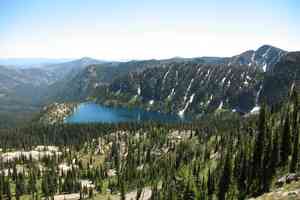


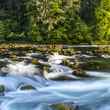
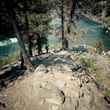
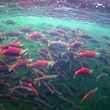
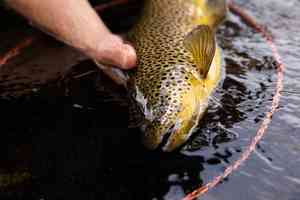


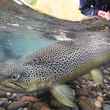



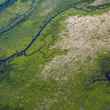

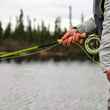

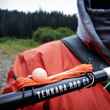

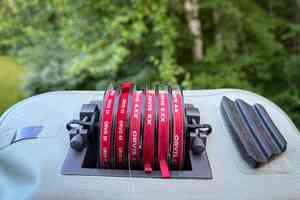
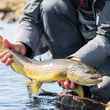
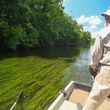
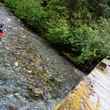

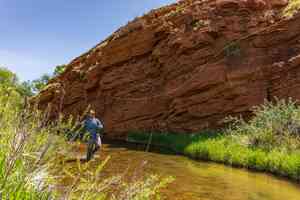


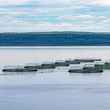
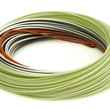
Comments